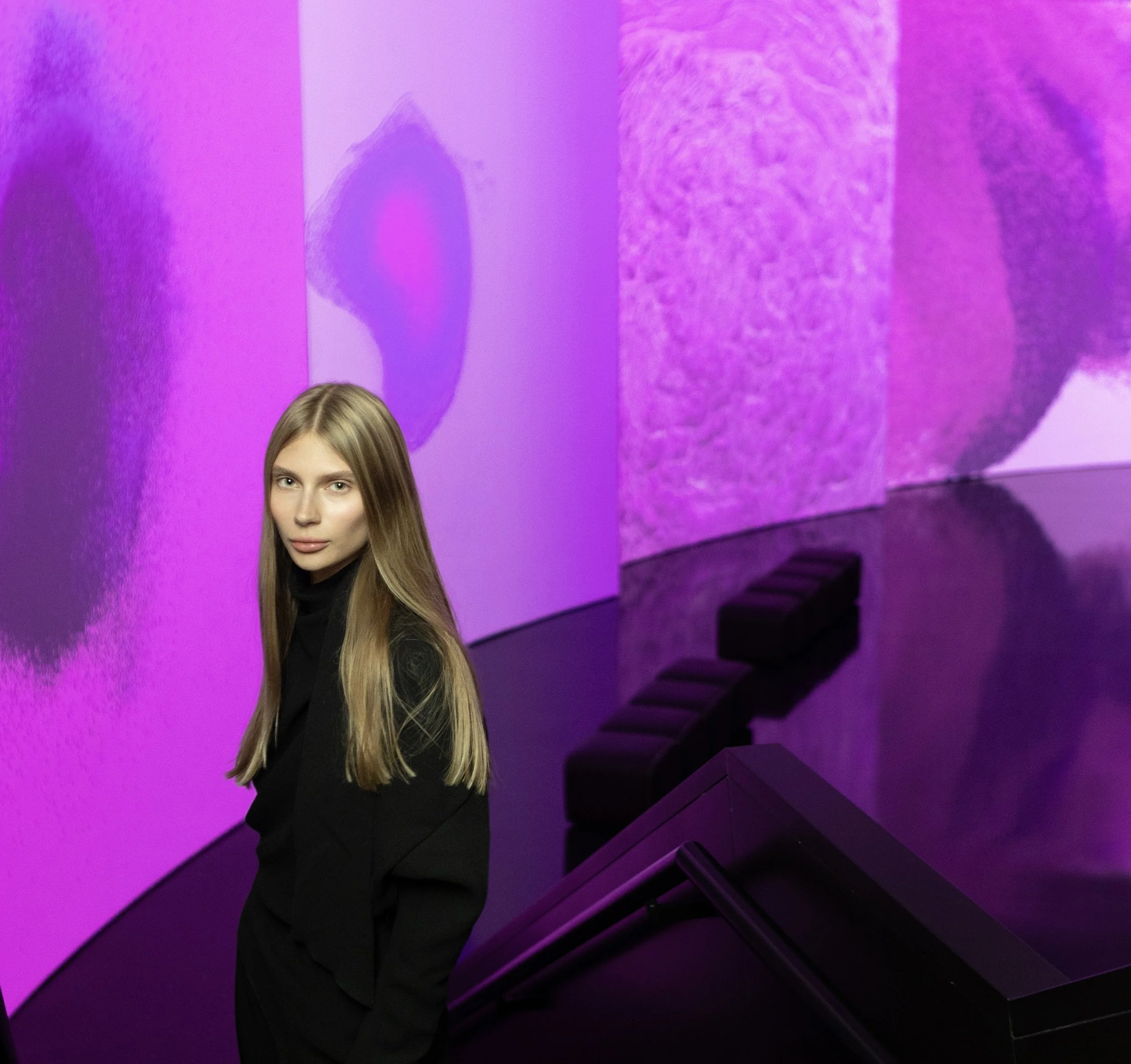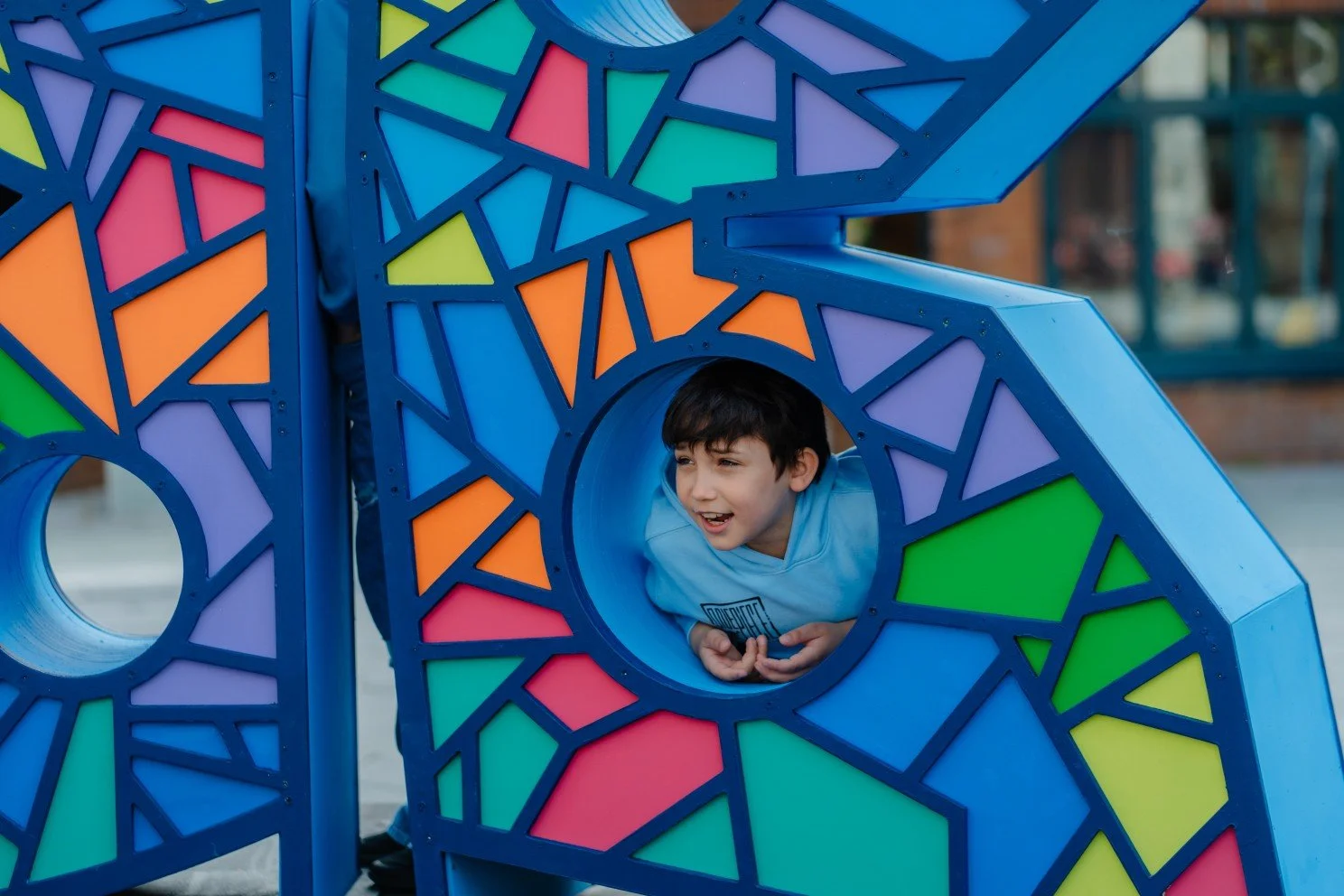INTERVIEW | YeeJae Kim
10 Questions with YeeJae Kim
Yeejae Kim is an artist whose interdisciplinary work spans performance, sculpture, video, and installation, using vulnerability to challenge the expectations and ideals imposed by beauty standards. Born and raised in Seoul, South Korea, she draws from her cultural background and personal experiences to engage with societal norms. Her projects have been showcased at venues including The Jewish Museum, Fredric Snitzer Gallery, theBLANC Gallery, and Wallach Gallery, among others. Kim earned her BA from the University of California, Davis, a Post-Baccalaureate from Brandeis University, and an MFA from Columbia University. She is currently based in Long Island City, NY.
YeeJae Kim - Portrait, 2024 | Photo Courtesy of JOHANNA (Johanna Valesquez)
ARTIST STATEMENT
“I explore the absurdities of beauty standards through my obsessions and perceived inadequacies, creating performances, sculptures, and installations that reveal the violence embedded in aesthetic molds, beauty myths, and consumer rituals. Growing up, I experienced these pressures firsthand; my grandmother would scrub my “때” (dark skin or dirt) with an exfoliating mitt at the bathhouse, driven by a belief rooted in generational Korean beauty culture that fairer skin equates to greater beauty. Her actions, along with the scrutiny of other Korean women, left an impression I sadly internalized.
In my recent work, happy factory, I focus on mass-producing the face of a character from a Korean exfoliating mitt—a symbol of my “ideal” beauty and fixation. The repeated, imperfect faces suggest an endless, unattainable quest for perfection, creating hierarchies and cycles of self-destruction within beauty culture. Through kinetic elements, I immerse viewers in visceral experiences that echo labor, manufacturing, and the critical gaze. Faces oscillate, inflate, and spin, producing sounds that blur laughter and crying—a space where playfulness and discomfort intersect.
Looking ahead, I aim to develop beauty and wellness “machines” with mismatched functions that defy any single purpose. These machines capture the impossibility of fitting our bodies to obsessive standards and question the power dynamics between body and apparatus. With repeated use of imagery, materials, and forms, my work engages the conflict between beauty ideals and individuality, asking: Does this repetition lead to self-care or self-erasure?”
— YeeJae Kim
happy factory, rubber, silicone, polyurethane foam, cement, cable wire, pulley, stainless steel carabiner, steel rod, aluminum,electric motor, power supply, fan, and PVC fabric, 12 x 20 x 10 ft, 2024 © YeeJae Kim
INTERVIEW
When did your interest in art first spark? Can you share the key moments or influences that shaped you into the artist you are today?
My interest in art began in elementary school when I participated in an outdoor drawing contest. The simple joy of expressing what I saw through crayons on a little sketchbook made me fall in love with creating art. While my practice has evolved significantly, that core passion for interpreting the world visually still drives my work. Another key moment was during my time at UC Davis. As an art major, I often felt insecure and even considered switching to psychology, as many of my friends doubted my future as an artist. A turning point came when one of my painting professors, who saw potential in me, encouraged me to continue pursuing art. That belief in me gave me the strength to persevere and commit fully to my artistic path.
Your interdisciplinary approach spans sculpture, video, installation, and performance. How do you decide which medium best conveys a particular concept or is more suitable for a project?
I don't approach each project with a specific medium in mind. Often, I incorporate multiple mediums within a single piece, depending on what will best express the concept. For instance, I've created sculptures that come to life through performance, and more recently, I've introduced kinetic elements into my work. I don't see it as a matter of choosing one medium over another; it's more about the message I want to communicate. The choice of medium naturally arises from the concept and its requirements. Some projects stay within a single medium, while others blend two or more, depending on the narrative I'm exploring.
happy factory (detail - a winch and a head), rubber, silicone, cement, cable wire, stainless steel carabiner, wood, pulley, steel, & electric motor winch, 2024 © YeeJae Kim
happy factory (detail), silicone, cable wire, pulley,& stainless steel carabiner, 6.5 x 4.25 x 0.13 in, 2024 © YeeJae Kim
How has your upbringing in South Korea shaped your artistic perspective and practice?
Growing up in South Korea has profoundly shaped my perspective and my artistic practice. My art is deeply tied to my life experiences, and I can't create work just for the sake of it—it has to reflect my voice and identity. South Korean society's rigid standards of beauty and behavior, which I often found stifling, have become an important part of my exploration of beauty and identity in my work. It's not just about cultural critique; it's about understanding the forces that shape who we are and how we see ourselves and others.
Your work often draws from deeply personal experiences, such as your grandmother's exfoliating rituals. What was the turning point when you realized these experiences could be transformed into a broader commentary through art?
My grandmother's exfoliating rituals were acts of love, but they were also deeply tied to societal pressures to meet beauty standards like fair skin. Growing up, I didn't initially recognize how this ritual was connected to colorism and the hierarchical value placed on lighter skin. It wasn't until I became more aware of how others' perceptions of me shaped my discomfort with my own identity that I began to realize how these personal experiences could form a broader commentary. I started to understand the generational impact of colorism and societal beauty standards, and I began channeling these struggles into my work, using personal discomfort to speak to larger issues of identity, beauty, and acceptance.
Can you delve deeper into "happy factory?" What drew you to this concept, and what do you wish to communicate?
"happy factory" is a continuation of my exploration of beauty standards, but it takes a step back to look at the largersystemic issues surrounding these ideals. In my earlier works, I focused on the personal—my experiences with beauty and identity. In "happy factory," I wanted to step back and examine the macro perspective. I explored how society creates a system where some succeed in fitting into these beauty molds while others fail. This endless cycle of achievement and failure perpetuates self-torture as we push ourselves to meet standards that are impossible to attain. Through this work, I hope to critique these societal pressures and ask why we continue to perpetuate a system that harms so many.
The repetitive, imperfect faces in your work highlight unattainable beauty ideals. How do you see repetition functioning as both critique and metaphor in your practice?
Repetition plays a significant role in my practice as it reflects both the violence and tension embedded in the pursuit ofbeauty ideals. While repetition is often seen as a symbol of rigor and consistency, for me, it represents a cycle of struggle and self-denial. Society's obsession with perfection forces us to repeatedly try to conform to unattainable standards, and this tension is mirrored in my use of repetition. It's not just about critiquing these cycles; it's also about illustrating the psychological and emotional toll they take, creating a metaphor for the ongoing internal conflict that many experience as they try to fit into an idealized mold.
happy factory (detail - surplus faces), rubber, cement, & polyurethane foam, 7 x 5 x 6 in each, 2024 © YeeJae Kim
happy factory (detail - the woman series), exfoliation mitt, wood, motor, steel, and power supply, 18 x 12 x 5 in, 2024 © YeeJae Kim
Your idea of creating beauty and wellness "machines" with mismatched functions is intriguing. How do you envision these machines contributing to the dialogue about body image and autonomy?
These "machines" serve as a critique of the way beauty tools and wellness products promise transformation, yet they often perpetuate an illusion. We are taught to rely on external tools to fix or enhance our bodies, believing they will lead us to some ideal of beauty. However, I want to challenge that assumption: Is this truly how we should define beauty? The machines question whether we are ever truly in control of our own bodies and beauty standards, or whether we are simply adhering to an external, arbitrary definition that's imposed on us. They invite us to reflect on autonomy in the context of body image.
Having lived and worked in South Korea and the United States, how do you navigate and address differing cultural and beauty standards in your practice?
Every culture has its own rigid beauty standards, but the underlying pressure to conform to these ideals is a universal experience. The types of beauty products that dominate in different countries often reveal the specific beauty molds that are most valued. For instance, whitening products are common across many cultures, reflecting the value placed on lighter skin. While I don't claim that all colorism stems from the same sources, there's a clear pattern of lighter skin being associated with higher social status in many parts of the world. My practice navigates these cultural differences by highlighting the shared pressures around beauty standards while acknowledging the unique ways they manifest in different contexts.
happy factory, rubber, silicone, polyurethane foam, cement, cable wire, pulley, stainless steel carabiner, steel rod, aluminum,electric motor, power supply, fan, and PVC fabric, 12 x 20 x 10 ft, 2024 © YeeJae Kim
As your work evolves, what themes or questions are you most excited to explore? Do you envision new directions or collaborations to expand your critical engagement with beauty culture?
I'm eager to dive deeper into how beauty culture influences not just physical appearance but our sense of power and self-worth. I want to explore how these internalized standards play out in everyday interactions, especially in more subtle or overlooked environments like workplaces, public transportation, and social gatherings. I'm also interested in exploring how beauty norms intersect with other social issues, such as class, race, and gender. Moving forward, I hope to collaborate with experts in fields like psychology, sociology, and even technology to expand my understanding of how these cultural pressures affect us psychologically and socially, adding more layers to my critical exploration of beauty.
What are you working on now? Do you have any new projects or series you would like to present to our readers?
Currently, I am working on a series of kinetic sculptures that explore the tension between relaxation and competition in leisure spaces—like outdoor gyms, cafes, and spas. These environments, generally associated with personal growth and leisure, unintentionally foster competition for superiority. My sculptures aim to reflect this dynamic, using industrial materials and everyday objects to create chaotic, nonsensical systems that capture the subtle but pervasive tension within these spaces. I'm excited to see how this work evolves and to engage viewers in rethinking how we experience competition, even in spaces meant for rest.
Artist’s Talk
Al-Tiba9 Interviews is a promotional platform for artists to articulate their vision and engage them with our diverse readership through a published art dialogue. The artists are interviewed by Mohamed Benhadj, the founder & curator of Al-Tiba9, to highlight their artistic careers and introduce them to the international contemporary art scene across our vast network of museums, galleries, art professionals, art dealers, collectors, and art lovers across the globe.




















